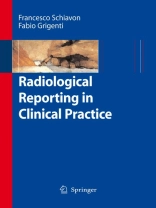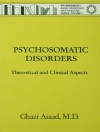Due to the diverse diagnostic imaging techniques available (x-ray/CT, Magnetic Resonance, Nuclear Medicine, Ultrasonography) radiologic examinations are made of an enormous amount of images, which means that the elements to be described and interpreted by the radiologist are sometimes exorbitant. Furthermore, the expectations of the population and the ones of the physicians requiring examinations are growing, so that besides patients, also so-called clients (i.e., supposed healthy people) flow into everyday clinical practice of a radiology department, based on disease prevention/screening programs.
Registration and interpretation/reporting modules of a computer-assisted radiologic reporting system were created to help the radiologist in his task. However, the radiologist is also expected to write a report with a diversified language, according to diagnostic technique(s), population type (client vs. patient; pediatric, adult, geriatric), pathology, and across all body areas.
The authors wish to suggest a shared methodology to uniform as much as possible the way of writing a radiologic report, how to most effectively communicate the results of an examination. The important role played by language also from a legal-forensic point of view is also considered.
Tabla de materias
From Images to the Technical and Ethical Responsibilities of Reporting.- Medical-Legal Aspects.- Review of the Literature on Reports.- Current Health Needs.- Principal Report Typologies.- From the Typology of the Report to the Sensitivity of the Radiologist.- The Psychology of a Good Report: Radiologist and User.- Radiological Semiotics in the Report.- Considerations on the Usefulness of the Clinical Description.- Common Sense in Clinical and Preclinical Diagnosis.- The Rationale of Reporting Methodology.- Normality Reports Depending on the Subject’s Age.- Errors in Reporting.- The Structured Report and PACS.- Radiological Reporting in the United States.












